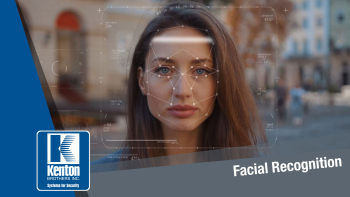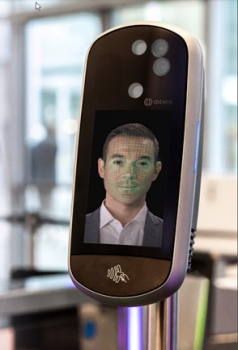Integrating Facial Recognition into Access Control Physical Security, Increasing Security and Convenience!
By David Strickland, Vice President of Kenton Brothers
“Innovate or Die”
 When walking through Kenton Brothers Systems for Security, you will see this phrase prominently displayed on the walls throughout our building. Innovation is one of our core values and it’s a big reason we continue to provide remarkable physical security solutions for our customers… going on 126 years.
When walking through Kenton Brothers Systems for Security, you will see this phrase prominently displayed on the walls throughout our building. Innovation is one of our core values and it’s a big reason we continue to provide remarkable physical security solutions for our customers… going on 126 years.
The world is very different than it was 125 years ago, and so are the solutions we provide to mitigate today’s security risks. The need for robust access control measures to safeguard sensitive areas is more critical than ever. As the security industry innovates, traditional methods like mechanical locks, keycards and PINs are gradually being replaced by cutting-edge biometric technologies. Among these, facial recognition stands out as a revolutionary tool, offering enhanced security and convenience in commercial access control physical security.
This blog explores the role of facial recognition as a biometric credential in access control. Here are five ways we think it will have a big impact.
1. Enhanced Security through Uniqueness:
Facial recognition technology capitalizes on the uniqueness of each individual’s facial features. Unlike passwords or keycards, which can be lost, stolen, or shared, faces are inherently unique, making them an ideal biometric credential. By registering authorized personnel in the system, access control devices can accurately match live facial images with the stored templates, ensuring that only authorized individuals gain entry.
2. Seamless and Contactless Authentication:
One of the standout advantages of facial recognition in access control is its contactless nature. Users no longer need to physically interact with devices or carry identification cards. Authentication is as simple as glancing at a camera, making it more convenient and hygienic—particularly in a post-pandemic world where reducing physical contact is thought to be essential.
3. Rapid and Real-Time Identification:
 Facial recognition technology operates at impressive speeds, providing real-time identification results. This capability is especially valuable in high-traffic areas like airports, offices, and educational institutions, where quick and efficient access control is necessary. The system can process multiple faces simultaneously, reducing bottlenecks and ensuring smooth entry flows.
Facial recognition technology operates at impressive speeds, providing real-time identification results. This capability is especially valuable in high-traffic areas like airports, offices, and educational institutions, where quick and efficient access control is necessary. The system can process multiple faces simultaneously, reducing bottlenecks and ensuring smooth entry flows.
4. Integration with Existing Systems:
Facial recognition can seamlessly integrate with existing access control infrastructure. Many modern access control systems are designed with open architecture, allowing easy integration with biometric devices. By retrofitting facial recognition solutions into their current systems, organizations can upgrade security measures without a complete overhaul.
5. Multifactor Authentication with one “credential”:
The fusion of facial recognition with other biometric security measures, such as fingerprint or iris recognition, could create biometric systems that offer even higher security levels and resistance to spoofing attempts. Multifactor authentication all within one “credential” – the human body!
So what about the other side of the coin… Can facial recognition be spoofed?
Yes, facial recognition can be defeated if the installation and calibration processes aren’t followed correctly. One innovation in the commercial security world is helping along that front. For instance, some systems such as IDEMIA use liveness detection, which ensures that the face presented for authentication is a live, three-dimensional image rather than a photograph. This feature guards against spoofing attempts, where adversaries try to trick the system with static images.
The future of facial recognition in access control physical security looks very promising. Advancements in artificial intelligence and machine learning algorithms will likely improve the accuracy and efficiency of these systems. Additionally, including 3D facial recognition technology could further improve security by adding an extra layer of depth and precision to the identification process.
We believe Facial Recognition as a biometric credential in access control physical security represents a remarkable leap forward in safety and convenience. With enhanced security features, contactless authentication, and rapid identification capabilities, facial recognition technology is reshaping access control best practices.
Want to learn more? Let’s get together and discuss how utilizing this technology can increase your commercial physical security while increasing convenience: two things that are traditionally in conflict!




Leave a Reply
Want to join the discussion?Feel free to contribute!